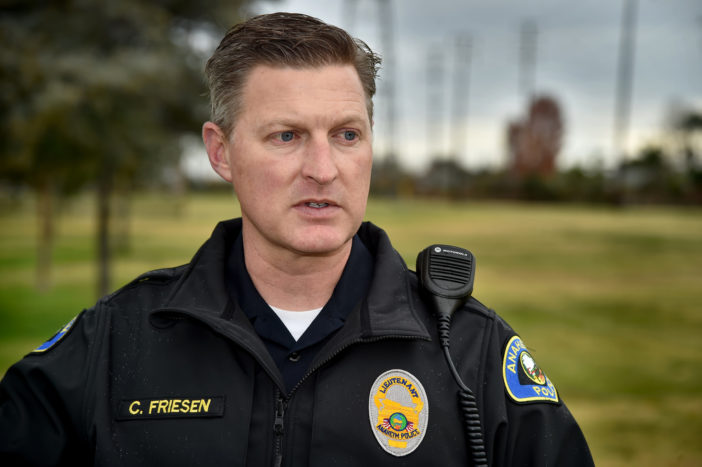First, families stopped visiting the park.
Then residents became vigilant when using the library, checking the bathrooms before letting children enter.
They changed their walking routes, installed security cameras, and locked their cars.
But now, after a multi-day outreach effort to Anaheim’s homeless population, families have returned to Anaheim’s parks, and residents feel safe once again in their neighborhoods.
David Klawe, who lives near Maxwell Park, celebrated by walking through the park after the day-long clean-up effort on December 21. A cleanup was held the next day at La Palma Park, followed about a week later by Sweitzer Park.
“I can’t believe they got so much done so fast,” Klawe said. “It was a lot of hard work, a lot of man hours.”
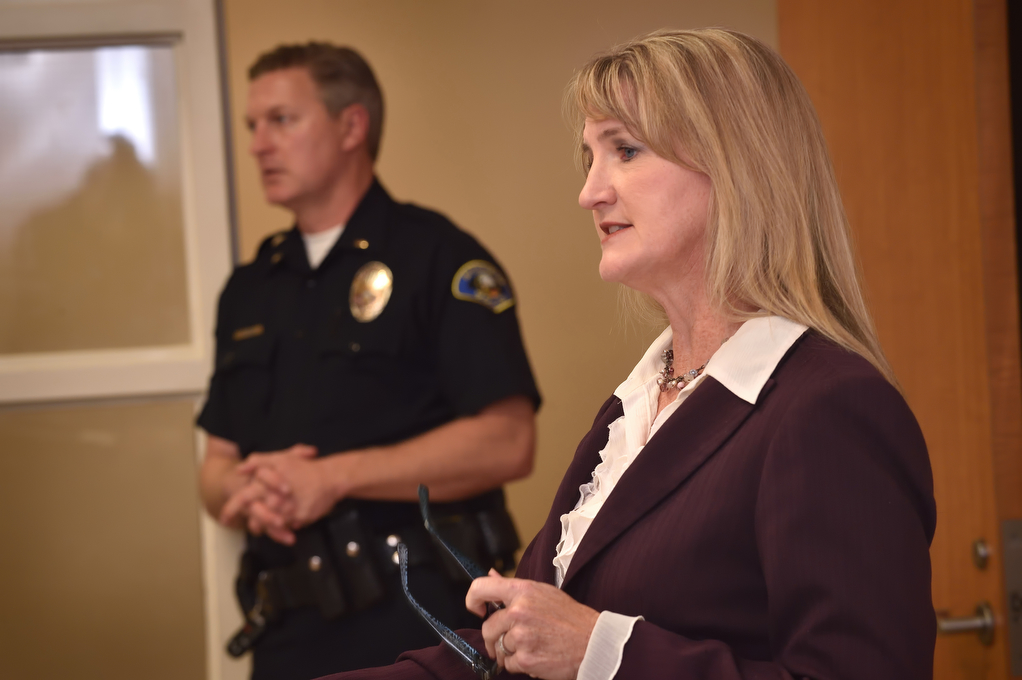
Community Preservation Manager Sandra Sagert from the City of Anaheim talks about homeless shelters during a West Anaheim Neighborhood Development Council (WAND) community meeting. Anaheim Police Lt. Craig Friesen is behind her, left.
Photo by Steven Georges/Behind the Badge
The effort focused on the most impacted park and public spaces, Anaheim Community Preservation Manager Sandra Sagert said. Those were Maxwell Park, La Palma Park, Schweitzer Park, Santa Cruz Street, the corner of Magnolia Street and La Palma Avenue, and the Union Pacific Railroad area near Cerritos Avenue.
The city placed about 158 people in shelters, stored 12 truckloads of property for homeless individuals, disposed of 115 needles, picked up more than 18 tons of debris and trash, and cleaned and sanitized sidewalks, streets, and gutters, Sagert said. Just five people were arrested, all for outstanding warrants.
“It was a huge operation… focused on getting as many people as we could into the shelter before the holidays and before the rains,” Sagert told residents at a recent West Anaheim Neighborhood Development Council (WAND) meeting.
Anaheim’s homeless population began to swell when vouchers given to those previously living in the Santa Ana riverbed began to expire and those housed temporarily in Anaheim motels found themselves back on the streets, said Anaheim Lt. Craig Friesen, who oversees the West District Community Policing Team, Homeless Outreach Team, and Psychiatric Emergency Response Team.
“All of those things led to an abundance of people utilizing our parks for camping and storing property, which are not their intended purpose,” Friesen said. “There was a high level of crime within the park that we were working to address, but what ultimately led to the park being cleaned up was the availability of shelter.”
Gretchen Levesque and her husband, Gene, coordinate the Trojan Neighborhood Watch near Maxwell Park.
“We weren’t safe in the park anymore,” Gretchen said. “There were things that were left in the park that could be dangerous to be stepped on as well as the unpredictable behavior of some people there. We couldn’t bring our children there anymore or our pets… (The police) went beyond the call of duty in many ways.”
Police unable to cite, arrest homeless
Prior to the outreach and clean-up effort, police officers were barred by law from issuing citations or arresting homeless people for illegal camping, property storage, and loitering if no shelter beds were available to offer the homeless to stay overnight.
“We just can’t keep going out and arresting people because if we don’t address the core issue that these are homeless people that don’t have a permanent residence, then we’re only going to be pushing them around,” Friesen said. “We call it ‘squeezing the balloon.’ We’re going to move them from one area to the other. The availability of shelters allows us to address their core issue, or at least get them in front of nonprofit partners.”
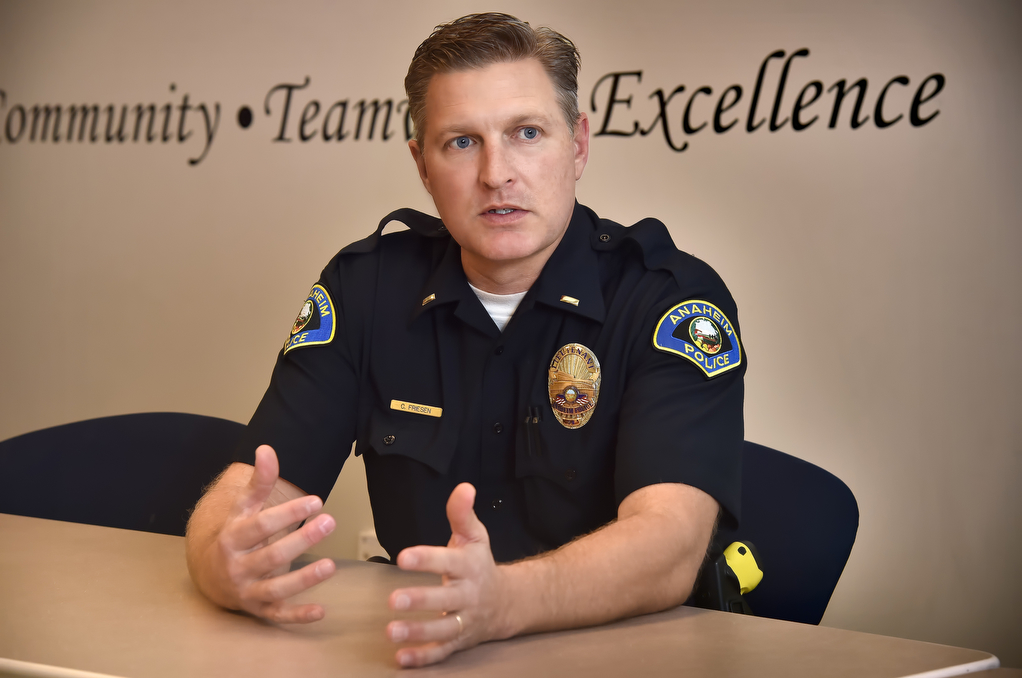
Anaheim Police Lt. Craig Friesen talks about the relocation of the homeless people who were camping at Maxwell Park and Schweitzer Park in Anaheim.
Photo by Steven Georges/Behind the Badge
In addition, a federal lawsuit settlement requires the city to provide 325 homeless shelter beds.
In response, the city created a 200-bed interim shelter that opened on December 20, along with plans for temporary shelters to open in January and February. The shelter’s opening created a ripple effect that allowed the cleanup to happen.
The city and the Salvation Army are working to create a 600-bed permanent care center that would provide transitional housing and services.
“We see that once people are housed, they tend to stay housed,” Friesen said. “(Many) times it takes about eight to 10 contacts for our Homeless Outreach Team to develop a level of trust where they will agree to at least try out the shelter.”
The city provided the funds for the cleanup, in addition to free property storage for homeless people who needed a place to keep their belongings.
“(Homelessness) is the number one issue that is facing our department and our city across the board,” Friesen said. “Every department in the city is working towards this problem.”
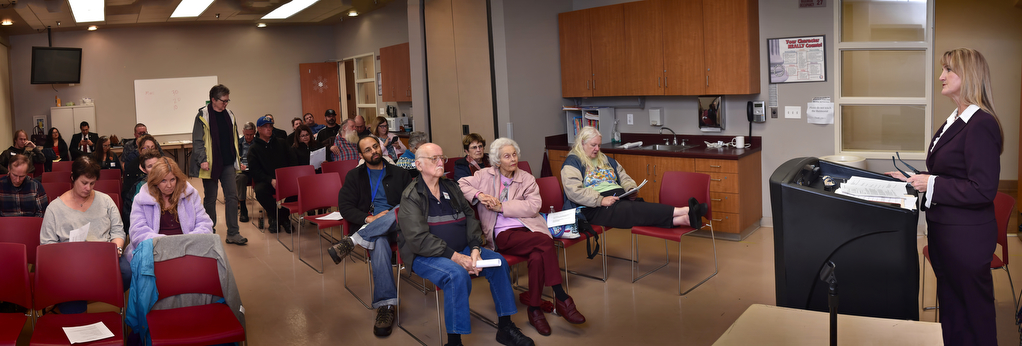
Anaheim Community Preservation Manager Sandra Sagert of the City of Anaheim speaks to residents about homeless shelters during a West Anaheim Neighborhood Development Council (WAND) meeting at the West Anaheim Youth Center.
Photo by Steven Georges/Behind the Badge
The Maxwell Park effort was well attended, with the Anaheim Police Department, Anaheim Fire & Rescue and its Community Care Response Unit (CCRU), U.S. District Court Judge David Carter, attorneys representing people suing the city and county, and representatives from the City of Anaheim.
The city works with groups including City Net, Chrysalis, Mercy House, the Illumination Foundation, Drug Free Anaheim, 211 OC, and others to provide shelter and services to those in need.
“By having a shelter, giving people a place to stay, we’re doing our part and we’re also complying with the judge’s rules because, ultimately, what the shelter availability does is restore our ability to utilize our municipal codes,” Friesen said.
Helping people escape homelessness
Every contact Anaheim officers have with someone homeless, he said, starts with an offer of shelter and services.
“It’s our goal to put them in situations where they can at least have the chance to make a change,” Friesen said. “We have countless resources that will help people in need. It’s my belief that if you’re homeless in Anaheim and we contact you, you’re only a few hours away from starting the process towards no longer being homeless.”
The Anaheim Police Department’s Homeless Outreach Team is Sergeant Mike Lozeau and Officers Daniel Lambaren, Roberto Benavidez, Zach Peterson, and Eric Meier. Members of the Psychiatric Emergency Response Team are Officers Mat Beck and Stephen Voss. The West District Community Policing Team consists of Sergeant Chris Cooper and Officers Sal Piscopo, Daniel Joachimstaler, and Stephen Salicos. The department also has several trained homeless liaison officers who supplement the detail on part-time, overtime basis.
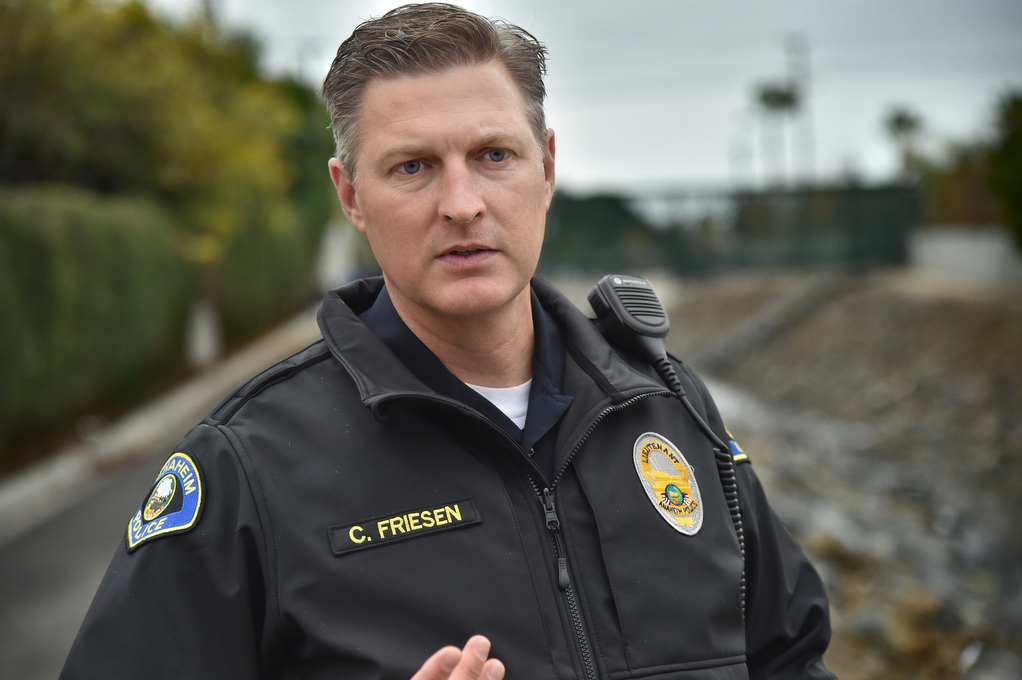
Anaheim Police Lt. Craig Friesen on the bike trail between Schweitzer Park and Anaheim’s West Police Substation.
Photo by Steven Georges/Behind the Badge
The department was proactive with enforcement operations leading up to the park cleanup effort, Friesen said, by enforcing laws and municipal codes, arresting those who stole decoy packages from nearby porches, and placing undercover officers in the park to locate narcotics being sold from those living alongside the parks.
“Anaheim PD patrolled our neighborhood constantly and they were nothing but kind,” Gretchen Levesque said. “Personally, I think their physical presence is what made the biggest difference. They were constantly offering services to the people at the park and showing them compassion as well.”
A return to normalcy for residents
As the park-adjacent homeless encampments grew, residents began changing their behavior, no longer drawn to the once-beautiful open space, public libraries, and biking and walking paths.
Klawe, who rode his scooter alongside his wife on her nightly walks, had to reroute away from Maxwell Park and West Broadway because the tents and belongings in the encampments encroached on the sidewalk leaving no space for Klawe to get through. In addition, he said, dogs would pop out of the tents, frightening the passersby.
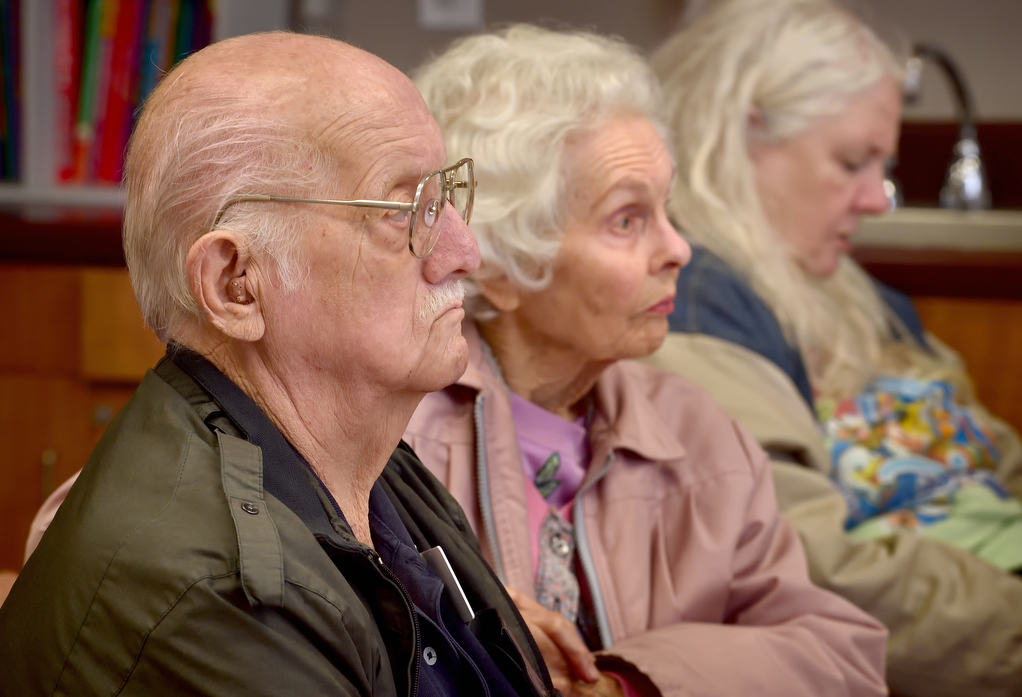
Andre Beck, left, is among the residents attending a West Anaheim Neighborhood Development Council (WAND) meeting as they talk about the homeless.
Photo by Steven Georges/Behind the Badge
“First we started walking around it, but it grew so much that we couldn’t even really go down Broadway,” Klawe said.
In addition, crime in the neighborhood increased, with more package thefts and car break-ins.
It’s a familiar story for those living in park-adjacent neighborhoods.
“You have a park across the street you couldn’t use and we couldn’t use the library anymore,” Gretchen Levesque said. “We didn’t feel safe sitting in the car in the parking lot.”
The Levesques, who were renovating a house on their street to sell, said some mornings they’d find that someone had removed a porch lightbulb and slept near the house, used the hose, left debris and trash, hopped the fence into the back yard, and once left human feces on a neighbor’s lawn.
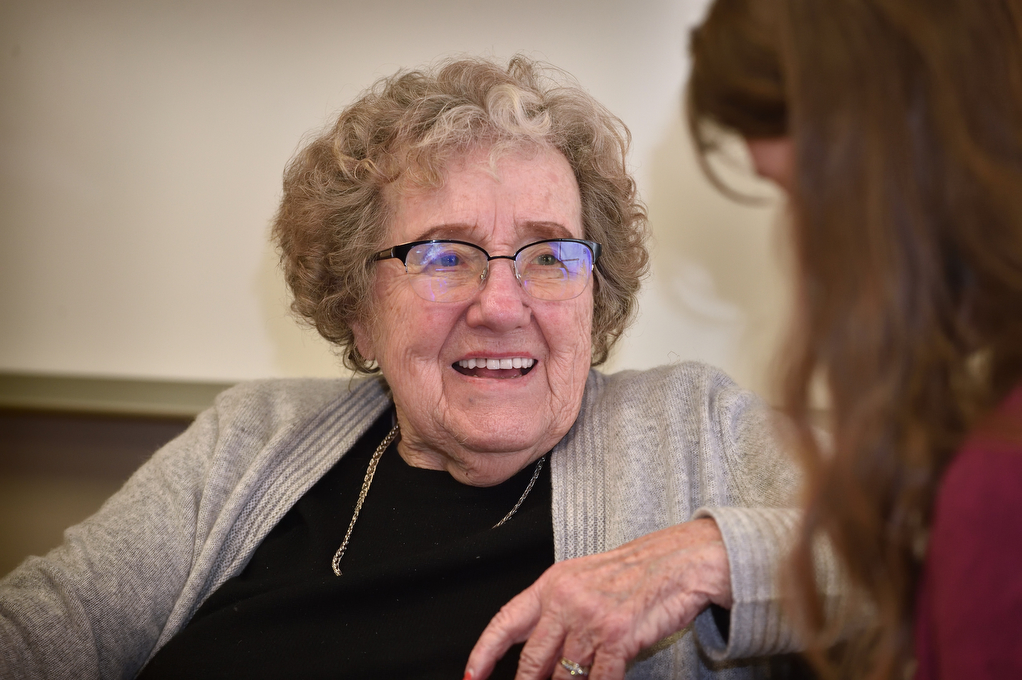
Chairwoman Esther Wallace of the West Anaheim Neighborhood Development Council (WAND).
Photo by Steven Georges/Behind the Badge
“People are living there and so they’re doing the things that people who are alive do,” she said. “As a neighborhood watch we were advocating for the shelters to be built as soon as possible. We felt terrible driving by every day and seeing those people sleeping on the hard concrete.”
For extra safety, the city swapped extra-bright lightbulbs into the street lights, and residents were encouraged to lock their car and home doors and windows.
“The Anaheim Police Department could not have done a better job,” Gretchen Levesque said. “They had this perfect balance of being firm and no nonsense and being kind and honest. The officers truly care about the people. That is key.”
WAND Chairperson Esther Wallace, a 50-year Anaheim resident, said she and her neighbors were thrilled to have the parks back.
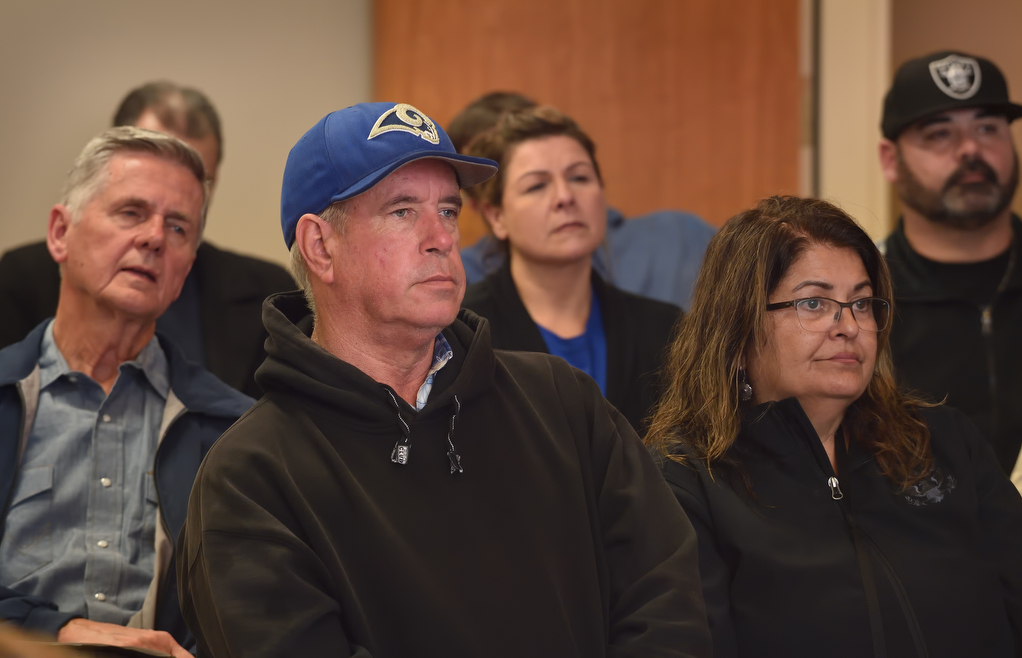
Mark Daniels of Anaheim, second from left, is among community members at a West Anaheim Neighborhood Development Council (WAND) meeting.
Photo by Steven Georges/Behind the Badge
“It’s a completely different world,” Wallace said. “People are so happy. When I saw all those people go in that one day Maxwell Park was cleaned… the park just looked pristine.”
After the cleanup at Maxwell Park, the Levesques’ teenage daughter and a friend packed a picnic lunch and a blanket and headed over to the park to enjoy the view and the sunshine.
“They felt like they christened it. We got our park back and we got our sanity back,” Gretchen Levesque said. “I immediately started walking in the park again. It’s completely clear and beautiful open space, beautiful trees.”

Anaheim Police Lt. Craig Friesen shows Maxwell Park, where a large group of homeless people had set up tents recently.
Photo by Steven Georges/Behind the Badge
Shelters in Anaheim
Interim shelter: 200 beds at 2040 South State College Boulevard
Temporary shelters: 224 beds at 1455 South Salvation Place and 101 beds at 3035 East La Mesa Street
Permanent shelter: The Salvation Army is set to build a 600-bed care center called Center of Hope to provide transitional housing and services
For more information, visit http://anaheim.net/4991/Addressing-Homelessness
 Behind the Badge
Behind the Badge
